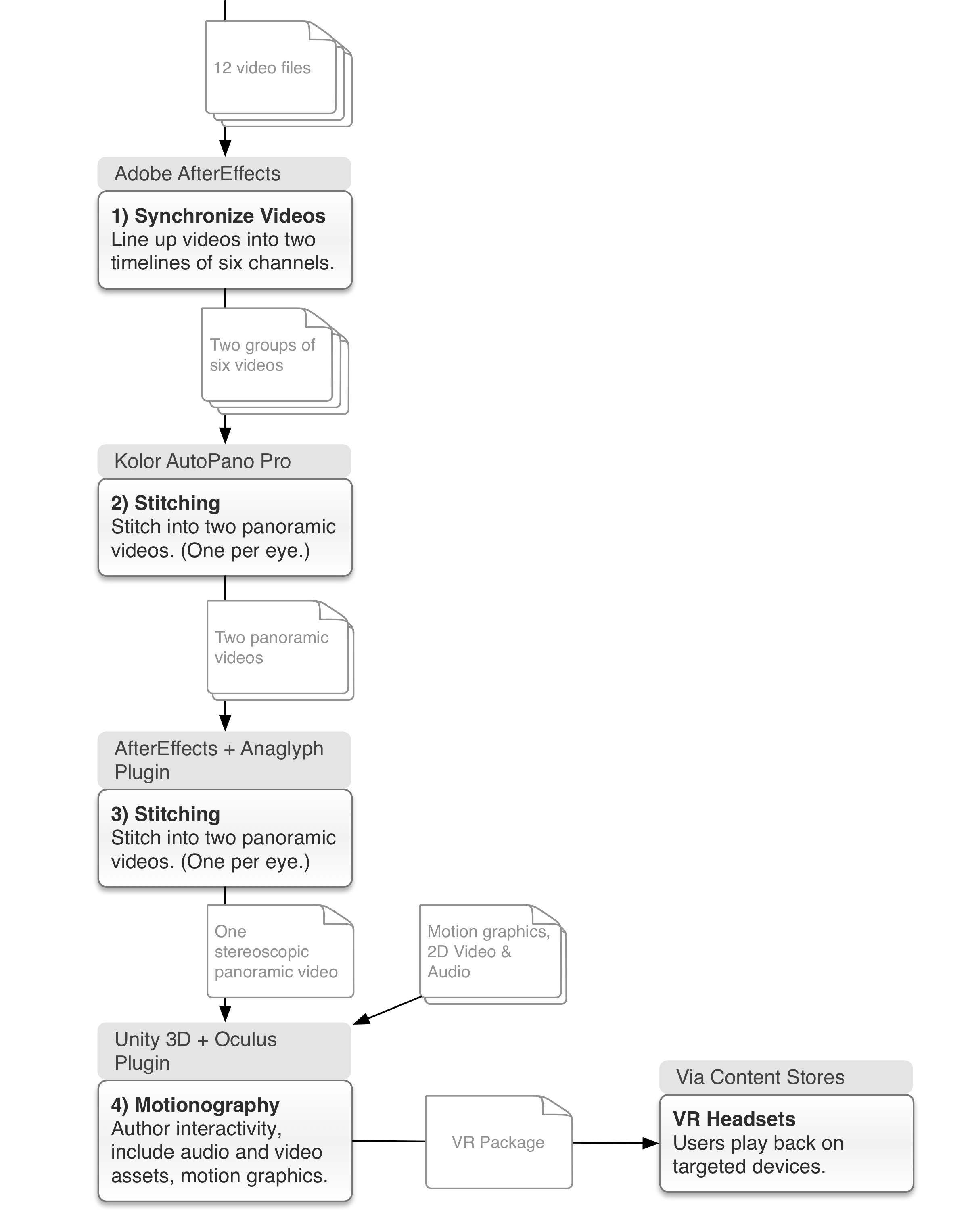Post-Production Technology and Workflow
This phase involves a combination of stitching raw video footage and assembling the interactive motion graphics, the audio, and the various video assets.

Video Stitching
Secret Location’s stitching process, the first three parts of the workflow diagrammed above, takes the raw camera footage and prepares it for inclusion into an immersive experience. The camera used was made from 12 Go-Pros arranged in six pairs of left and right; together, they covered a sphere.
In the first step of the process, marked part 1 above, the technicians took the raw video files from the GoPro cameras and, in the video effects software system Adobe AfterEffects, made a timeline for the left eye and a timeline for the right eye. Each timeline had six synchronized video channels; one for each segment of the sphere. At this point the technician also corrected the color and exposure for consistency (but not yet perfect).
In part 2, the technician worked in a software system called Autopano Giga by the Kolor company. It’s designed for stitching together video pixels. The technician took the six video channels for each eye, which were produced in the previous step, and stitched them together into two panoramic videos; one for each eye. The technician also worked to make the color and exposure even better.
In part 3, the two spherical video files went back into AfterEffects, and using the Anaglyph plug-in, they were combined into a single-stereo panoramic video.
VR Motionography
This step, marked part 4 in the diagram above, is fundamentally where the audience experience gets shaped. Its closest analogy for traditional documentary filmmakers would be the video-editing process, where a story starts attaining its coherent form. The Secret Location motionographer worked in the software package Unity 3d with the Oculus plug-in.